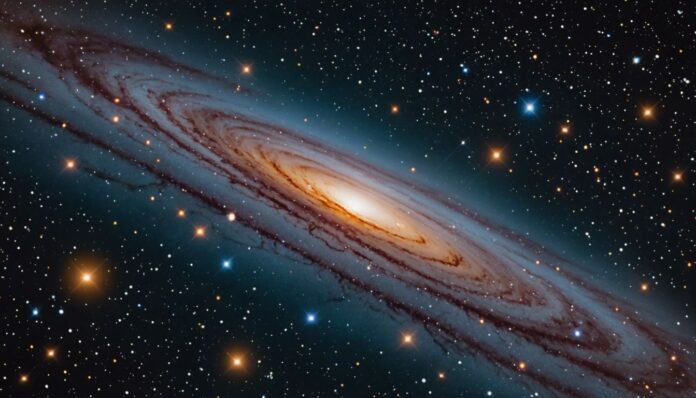The universe is a vast and mysterious place, filled with wonders beyond our imagination. From mind-boggling distances to mind-bending phenomena, the cosmos continues to amaze and astonish astronomers and researchers. This article takes you on an exhilarating cosmic journey, delving into the wonders of the universe, from its mind-boggling size and age to the captivating phenomena that shape its evolution.
Key Takeaways
- The Big Bang Theory explains the origin and expansion of the universe, supported by substantial evidence and observations.
- Dark Matter and Dark Energy are mysterious components that significantly influence the universe’s structure and behavior.
- The Cosmic Microwave Background Radiation provides crucial insights into the early universe and its subsequent development.
- Galaxies and clusters form complex structures in the universe, showcasing dynamic evolution and interactions.
- Black Holes and Gravitational Waves play a pivotal role in understanding the fabric of space-time and cosmic events.
The Big Bang Theory
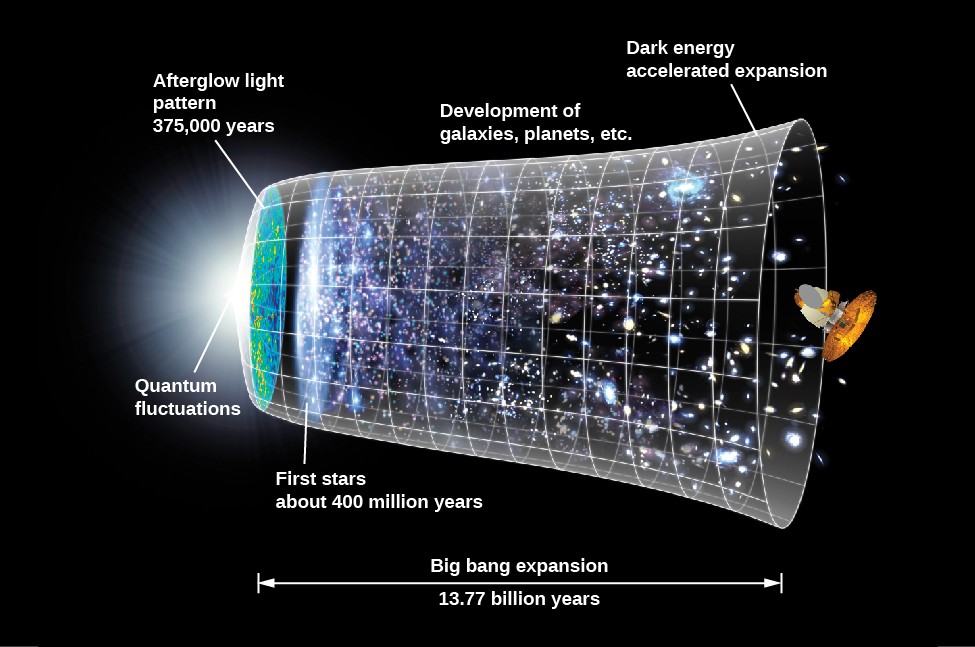
Formation of the Universe
The Big Bang Theory, the most widely accepted explanation for the origin and evolution of the universe. It proposes that the universe originated from a singularity, a point of infinite density and temperature around 13.8 billion years ago. This singularity expanded rapidly, and as it did, it cooled and formed subatomic particles, atoms, and eventually the stars and galaxies we see today. This event marked the beginning of time, space, and matter as we know it. The first cosmological theory of the Big Bang type dates back to 1931, when Belgian physicist and Catholic priest Georges Lemaître proposed a model based on the expansion of the universe.
Evidence and Observations
Several key observations support the Big Bang Theory. These include the cosmic microwave background radiation, the abundance of light elements, and the redshift of galaxies. The James Webb Space Telescope’s first “deep field” image showing ultra-distant galaxies almost refuted the Big Bang Theory, but it ultimately provided more evidence for it.
Expansion of Space
The universe has been expanding since the Big Bang, and this expansion is accelerating due to dark energy. The fate of the universe depends on its total mass and the amount of dark energy it contains. It could either continue expanding indefinitely, a scenario known as the “big rip,” where the expansion becomes so rapid that it tears apart the fabric of space itself, or experience a Big Crunch, collapsing back on itself. The universe’s fate is a topic of ongoing research and debate, with scientists using observations of distant galaxies and the cosmic microwave background radiation to better understand the universe’s evolution and ultimate destiny.
Scientists typically express the rate of expansion of the universe as the Hubble constant (H0), which is the rate at which galaxies move away from each other. Researchers usually measure the Hubble constant in units of kilometers per second per megaparsec (km/s/Mpc). Based on observations of the cosmic microwave background radiation and the large-scale structure of the universe, the current best estimate of the Hubble constant is around 67.4 km/s/Mpc. However, there is a discrepancy between this value and other measurements, such as those based on the distances to nearby galaxies and the brightness of type Ia supernovae, which suggest a higher value of around 73.3 km/s/Mpc. Researchers know this discrepancy as the Hubble tension, and it remains unresolved.
Expansion Rate Variations
Recent studies have revealed that the expansion rate of the universe is not constant. The expansion rate varies across different regions of the universe, with some areas expanding faster than others. Scientists know this variation as the “Hubble tension”. The Hubble tension is a significant challenge to our understanding of the universe, as it suggests that the laws of physics may not be the same everywhere. There are several theories attempting to explain this variation, including:
- Modified Gravity: One possibility is that the force of gravity is not as strong in some regions of the universe, causing the expansion rate to vary.
- Dark Energy: Another possibility is that dark energy, a mysterious force thought to be responsible for the accelerating expansion of the universe, is not uniform across the universe.
- New Physics: Some scientists propose that new, as-yet-unknown physical forces or particles could be responsible for the variation in expansion rates.
Researchers are still testing and refining these theories, but they highlight the ongoing efforts to understand the complexities of the expanding universe.
Although Lemaître came up with the theory of the Big Bang, he was not the one to coin its iconic name. That honor goes to Sir Fred Hoyle, an English astronomer who first used the term during a BBC radio broadcast in 1949.
The Universe’s Composition and Structure
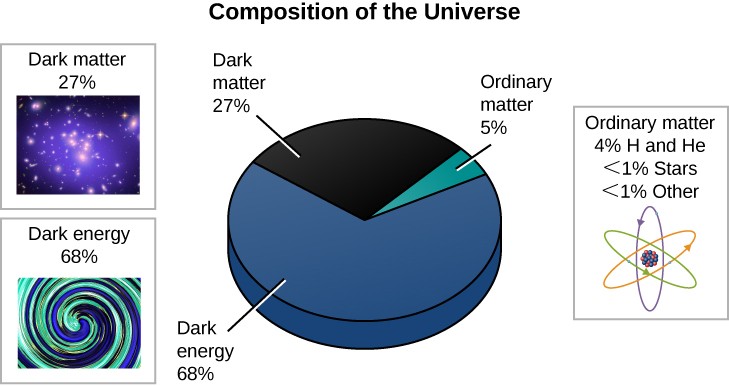
Ordinary Matter and Dark Matter
The universe consists of two main types of matter: ordinary matter and dark matter. Ordinary matter is the type of matter that we can see and interact with, such as stars, planets, and galaxies. It makes up only about 15% of the universe’s total mass-energy density.Dark matter, on the other hand, is an invisible type of matter that does not interact with light and is therefore invisible to our telescopes. It makes up about 85% of the universe’s total mass-energy density. Swiss astrophysicist Fritz Zwicky first proposed the existence of dark matter in the 1930s, and later, observations of galaxy rotation curves and the large-scale structure of the universe confirmed its existence.
Galaxies and Cosmic Structures
Galaxies are massive, gravitationally bound systems consisting of stars, stellar remnants, interstellar gas, dust, and dark matter. They come in a variety of shapes and sizes, ranging from small dwarf galaxies to large spiral galaxies like the Milky Way. Galaxies are not isolated objects but often exist in large clusters and superclusters. Gravity holds these structures together, and scientists believe they formed through the gravitational collapse of small fluctuations in the universe’s density. The universe also contains many other types of cosmic structures, including:
- Galaxy Clusters: They are large groups of galaxies held together by gravity. These clusters often reside at the centers of superclusters, and scientists believe they formed through the gravitational collapse of large-scale structures.
- Superclusters: These are large regions of space that contain many galaxy clusters and superclusters. Scientists believe superclusters formed through the gravitational collapse of even larger-scale structures.
- Voids: These are large regions of space that are relatively empty of galaxies and other cosmic structures. Scientists believe voids formed through the gravitational collapse of large-scale structures.
Dark Matter and Dark Energy
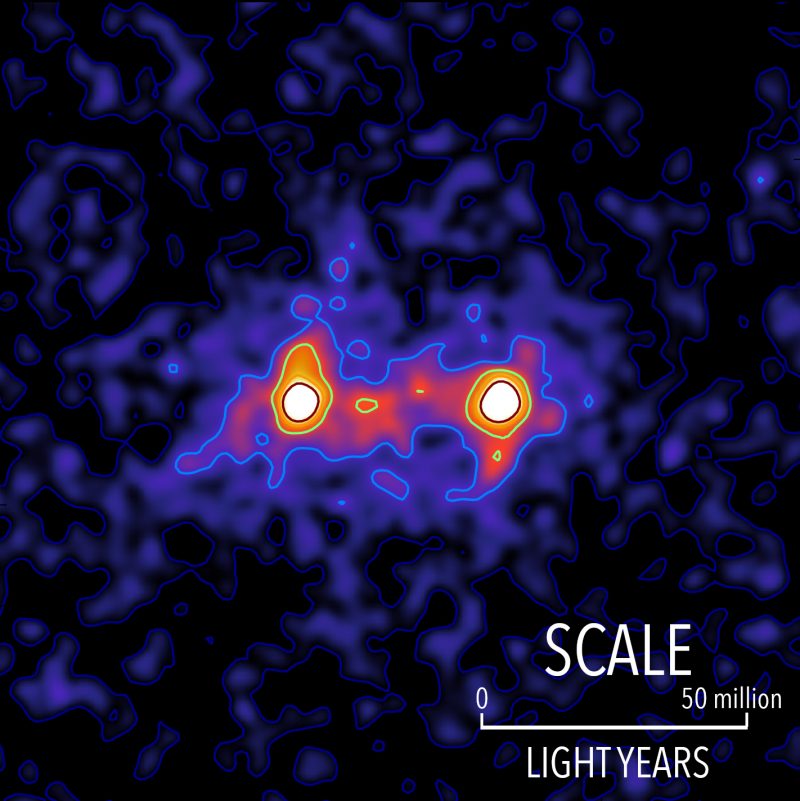
Mysterious Components
Dark matter and dark energy are mysterious substances that affect and shape the cosmos, and scientists are still trying to figure them out. About 26.8% of cosmic mass-energy is invisible dark matter, revealed because it tugs with its gravity on the visible stuff. Candidates for what makes up dark matter include hitherto unknown subatomic particles and black holes made in the Big Bang.
In addition to dark matter, there is dark energy, accounting for 68.3% of the mass-energy of the Universe. Scientists attribute dark energy as the mysterious force responsible for the accelerating expansion of the universe. Its discovery in the late 1990s stemmed from observations of type Ia supernovae, which are exploding stars used as “standard candles” to measure distances in the universe. It is a negative pressure that pushes matter apart, causing the universe to expand at an ever-increasing rate. While the exact nature of dark energy remains unknown, scientists believe it is a property of space itself rather than a type of matter or radiation.
Effects on the Universe
- Dark Matter: An invisible form of matter that exerts gravitational effects on visible matter, binding galaxies together.
- Dark Energy: A mysterious form of energy that drives the accelerated expansion of the universe.
Challenges in Understanding
Scientists infer the existence of dark energy and dark matter by observing the gravitational influence they exert on normal matter, which is the part of the universe that can be seen.
The universe’s structure and dynamics are influenced by two mysterious entities: dark matter and dark energy. Dark matter, although invisible, exerts gravitational effects that bind galaxies together. Dark energy, on the other hand, is responsible for the accelerated expansion of the universe.
Cosmic Microwave Background Radiation
Discovery and Significance
The cosmic microwave background (CMB) is a faint electromagnetic radiation filling the universe that is a residual effect of the Big Bang 13.8 billion years ago. This afterglow of the Big Bang provides valuable information about the early stages of the universe. Believe it or not, you’ve seen the CMB with your own eyes, as it produces the static signal you see on analog TVs and hear on radios when you search between stations.
Insights into the Early Universe
The CMB is made up of light echoes left over from the Big Bang that created the universe 13.7 billion years ago. The heat of the Big Bang fireball was bottled up in the universe and is still around us today. Its temperature is 2.725°C above absolute zero (–270°C), the lowest temperature possible, and is essentially the same everywhere.
Mapping the CMB
Mapping the CMB has provided significant insights into the structure and composition of the universe. Scientists use sophisticated instruments to measure the tiny fluctuations in the CMB’s temperature, which reveal information about the density and distribution of matter in the early universe. These observations have helped to confirm the Big Bang theory and have provided a wealth of data for cosmologists to study.
The universe has echoes of its birth, and the CMB is a crucial piece of evidence that helps us understand the origins and evolution of the cosmos.
Galaxies and Clusters
Galaxies are cosmic cities, vast collections of stars, gas, and dust held together by gravity. They come in various shapes and sizes, from spiral galaxies like our Milky Way to elliptical and irregular galaxies. The largest contain trillions of stars and can be more than 100,000 light-years across.
Galaxies evolve over billions of years. The nearest galaxies–the larger, brighter, well-defined spirals and ellipticals–thrived about 1 billion years ago, when the cosmos was 13 billion years old. Stars within these galaxies undergo a life cycle, from formation to eventual death or transformation.
Clusters of galaxies are the largest structures in the universe, often containing thousands of galaxies bound together by gravity. The Great Wall is a massive cosmic structure made up of superclusters of galaxies stretching for hundreds of millions of light-years across the universe.
The universe is a vast expanse containing billions of galaxies, each with billions of stars.
Black Holes and Gravitational Waves
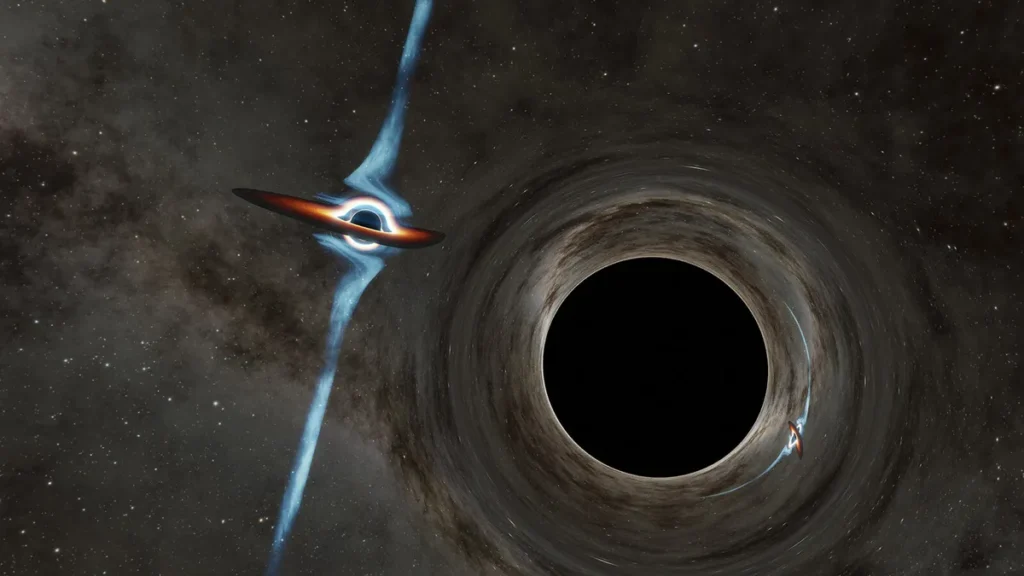
Role in the Universe
Black holes are regions in space where gravity is so strong that nothing, not even light, can escape. They play a crucial role in the universe by influencing the formation and evolution of galaxies. These enigmatic objects are often found at the centers of galaxies, including our own Milky Way.
Detection and Observations
On 14 September 2015, gravitational waves were detected on Earth for the first time. These ripples in the fabric of spacetime, predicted by Einstein in 1916, came from the merger of two black holes in a distant galaxy. This event marked the beginning of a new era in cosmic exploration. Instruments like the Laser Interferometer Gravitational-Wave Observatory (LIGO) allow us to observe cataclysmic events, such as the collision of black holes or neutron stars, providing unique insights into the nature of gravity and the universe itself.
The first gravitational waves detected came from a binary black hole system nobody predicted.
Impact on Space-Time
Gravitational waves are ripples in spacetime caused by cataclysmic events, such as merging black holes or neutron stars. These waves carry information about their origins and about the nature of gravity that cannot be obtained by other means. The detection of gravitational waves has opened up a new window for observing the universe, allowing scientists to study phenomena that were previously beyond our reach.
Conclusion
The universe, with its vast expanse and myriad mysteries, continues to captivate and challenge our understanding. From the explosive beginnings of the Big Bang to the enigmatic forces of dark matter and dark energy, each discovery propels us further into the cosmic unknown. The study of the cosmic microwave background radiation offers a glimpse into the universe’s infancy, while the intricate dance of galaxies and clusters reveals the dynamic nature of cosmic structures. Black holes and gravitational waves further underscore the profound impact of celestial phenomena on the fabric of space-time. As we continue to explore and unravel the secrets of the cosmos, we are reminded of the boundless wonders that await us in the ever-expanding universe. Our journey through the stars is far from over, and each revelation brings us one step closer to comprehending the grandeur of the universe.
Frequently Asked Questions
What is the Big Bang Theory?
The Big Bang Theory is the leading explanation for how the universe began. It suggests that the universe started from an extremely hot and dense singularity and has been expanding ever since.
What evidence supports the Big Bang Theory?
Key evidence includes the cosmic microwave background radiation, the abundance of light elements, and the redshift of galaxies, which indicates that the universe is expanding.
What is the expansion of the universe called?
The expansion of the universe is called the Big Bang theory. It is the scientific explanation for the origin and evolution of the universe, proposing that the universe began as an infinitely hot and dense point and expanded rapidly around 13.8 billion years ago.
What are dark matter and dark energy?
Dark matter and dark energy are mysterious components of the universe. Dark matter is thought to make up about 27% of the universe and affects the motion of galaxies, while dark energy is believed to be responsible for the accelerated expansion of the universe and makes up about 68% of it.
How was the cosmic microwave background radiation discovered?
The cosmic microwave background radiation was discovered by accident in 1965 by Arno Penzias and Robert Wilson, who detected a persistent noise in their radio antenna, which turned out to be the afterglow of the Big Bang.
What are black holes?
Black holes are regions of space where gravity is so strong that nothing, not even light, can escape from them. They are formed when massive stars collapse under their own gravity at the end of their life cycles.
What are gravitational waves?
Gravitational waves are ripples in space-time caused by some of the most violent and energetic processes in the universe, such as colliding black holes or neutron stars. They were first predicted by Albert Einstein in 1916 and directly detected by LIGO in 2015.
How is the universe expanding if it’s infinite?
The universe is not necessarily infinite in size. The visible universe is a sphere, centered on the Earth, and about 92 billion light-years across. However, there are theories that suggest the universe could be infinite in size, with the visible universe being just a small part of it. This is known as the “infinite universe” or “multiverse” concept.
At what speed is the universe expanding?
The rate of expansion of the universe is typically expressed as the Hubble constant (H0), which is the rate at which galaxies move away from each other. The current best estimate of the Hubble constant is around 67.4 km/s/Mpc, based on observations of the cosmic microwave background radiation and the large-scale structure of the universe.
Who discovered that the universe is expanding?
The expansion of the universe was first proposed by American astronomer Edwin Hubble in the 1920s. Hubble observed that the light coming from distant galaxies was shifted towards the red end of the spectrum, indicating that those galaxies were moving away from us. This observation led to the conclusion that the universe is expanding.
